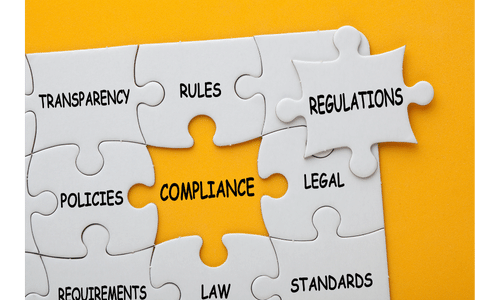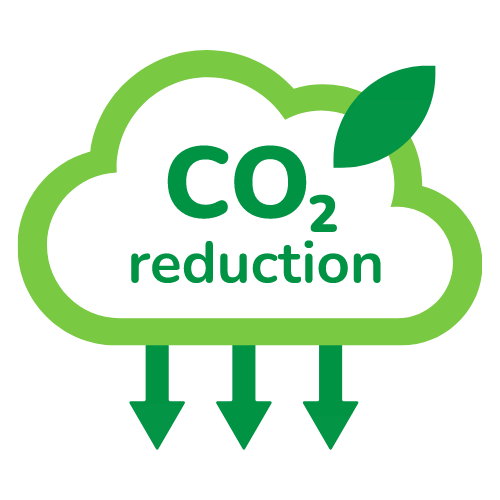Companies have long known that design decisions determine most of a product’s manufacturing, operating, and maintenance costs. But did you know that the same logic applies to sustainability as well? McKinsey's research suggests that while research and development only account for up to 5% of the total product cost, it influences up to 80% of that product’s resource footprint.
What is sustainable product development?
Sustainable product development is the process of developing products with a focus on minimizing their environmental impact throughout their entire lifecycle. This approach considers the environmental, social and economic impacts of a product from its creation to end-of-life disposal or recycling.
Benefits of sustainable product development for the business
Environmental Stewardship:
The biggest reason to adopt sustainable practices is fairly obvious but crucial at the same time. Sustainable product development is essential for reducing the environmental footprint of products. It acknowledges that natural resources are limited and aims to reduce harm to the ecosystem, air, and water. By adopting sustainable practices, you can contribute to protecting and preserving the planet for future generations.
Resource Efficiency:
Sustainable product development focuses on optimizing resource use throughout a product's lifecycle. This includes reducing waste, conserving energy, and maximizing the lifespan of products. As a result, you can reduce extraction of raw materials, energy consumption and landfill waste whilst also lowering your own costs.
Regulatory Compliance:
Governments worldwide are imposing stricter environmental regulations and businesses must meet specific requirements to receive an approval as a green organization. Companies that proactively focus on sustainability are more prepared to follow guidelines, and avoid potential fines and legal problems.
Brand Reputation:
Commitment to sustainability enhances your company's brand reputation and fosters trust among customers, investors, and partners. It demonstrates corporate responsibility and a commitment to building a greener future. 84% of global consumers consider sustainability to be important when choosing a brand (IBM Research Brief). 62% of consumers also say they’re willing to change purchasing behavior to help reduce the negative environmental impact.
Implementing sustainable product development
Start with research:
To make informed and sustainable decisions during the product development process, you need to build a strong knowledge foundation. This involves actively seeking expert insights to thoroughly assess the implications of your choices.
You should also collect insights on your users' needs and understand how they will use your product or service. Early-stage user testing will allow you to focus on the ideas that resonate the most with your customers and eliminate the features that serve no purpose, thereby reducing resource consumption.
Energy-Efficient Designs:
Energy-efficient product designs aim to minimize energy consumption during production, usage, and disposal phases. Review your routines to minimize energy and resource consumption in production as well as transport. Consider how the end product can also minimize the user's energy and resource consumption. These steps not only lower the running costs for you but also reduce greenhouse gas emissions.Using renewable energy like solar or wind power in product development and manufacturing processes can reduce the carbon footprint associated with energy consumption too.
Product longevity, repairability and recyclability:
Looking at the product move through its lifecycle can give you a lot of insight. You can see how the product forms and where it ends up, be it in a landfill, reused or recycled. When adopting a sustainable perspective, it becomes crucial to explore strategies for altering a product's end-of-life scenario.
This is because the longer a product remains functional, the more it postpones its disposal in a landfill. Focusing on the durability and repairability in the development process can substantially prolong the lifespan of a product. This will consequently reduce the energy and materials required for the replacements.
Prepare for upgrading, repair and recycling through accessibility, labeling, modular construction and manuals. Use as few joining elements as possible, avoid unnecessary screws and bonding, and look for intelligent geometric solutions. Can you reuse or recycle the materials used in your product?
For example, materials like steel, aluminum, PET plastic, and HDPE plastic are good contenders for easy recyclability. Aluminum is a great material for other reasons as well. The metal is light, strong, non-toxic and resistant to corrosion. Plus, the extrusion process enables you to shape aluminum profiles in almost any way you want.
You should also think about how many different materials you plan on using. Single material products are normally easier to recycle or reuse than products made using multiple or blended materials. If your product has different materials, it should be easy to disassemble and recycle or reuse them.
Use eco-friendly materials:
Use less material or replace high-footprint virgin materials with lower-impact recycled or biologically based alternatives. For instance, the Swiss sports shoe manufacturer 'On' created a fully recyclable shoe. Instead of selling the product outright, the company provides a subscription model to its customers. They can return the shoes to the manufacturer for disassembly when they become worn-out and will receive a fresh pair in return.Choosing renewable materials like bamboo, cork, or sustainably sourced wood can reduce the reliance on non-renewable resources. These materials often have a lower carbon footprint and can be replenished over time.
Incorporating recycled materials like recycled plastics or metals into product designs reduces the demand for virgin materials and diverts waste from landfills. Many companies now make their products entirely or partially from recycled materials.
Last but not least, biodegradable materials, like bioplastics or natural fibers, break down easier without harming the environment. They are an excellent choice for products that have a limited lifespan, reducing long-term environmental impact.
Supplier selection:
When designing a product, it’s also important to consider the origins of the materials. You could source your materials from a company that only employs recycled materials or with their own sustainability initiatives. Even the procurement of materials from local sources can make a significant difference! By opting for local materials, you could reduce transportation expenses and, consequently, lower product’s lifetime CO2 emissions.
Be aware of emissions costs:
Sustainable design presents intricate challenges and compromises. For instance, reducing a product's carbon footprint by replacing virgin materials with recycled ones may seem beneficial at first. However, the transportation emissions could counteract any benefits if the recycling facilities are in distant places.Design teams require accurate information on the environmental impact, expenses, and potential risks linked to various materials and manufacturing choices to choose the best option. Combining thorough analysis with innovative thinking can lead to solutions that enhance environmental sustainability, reduce expenses and increase customer value.
Conclusion
Sustainable product development is no longer a choice, it has become an absolute necessity in today's world. Luckily, you can simultaneously benefit the planet and enhance your profitability. Greener practices like eco-friendly materials and energy-efficient designs can obviously help you reduce your environmental impact but they can also have an influence on the entire value chain offering financial benefits and a competitive edge.





